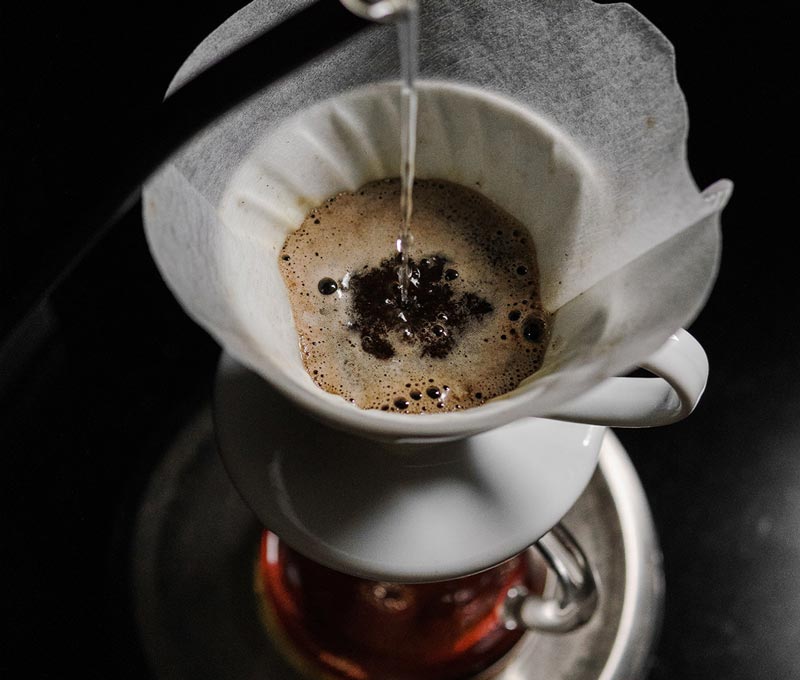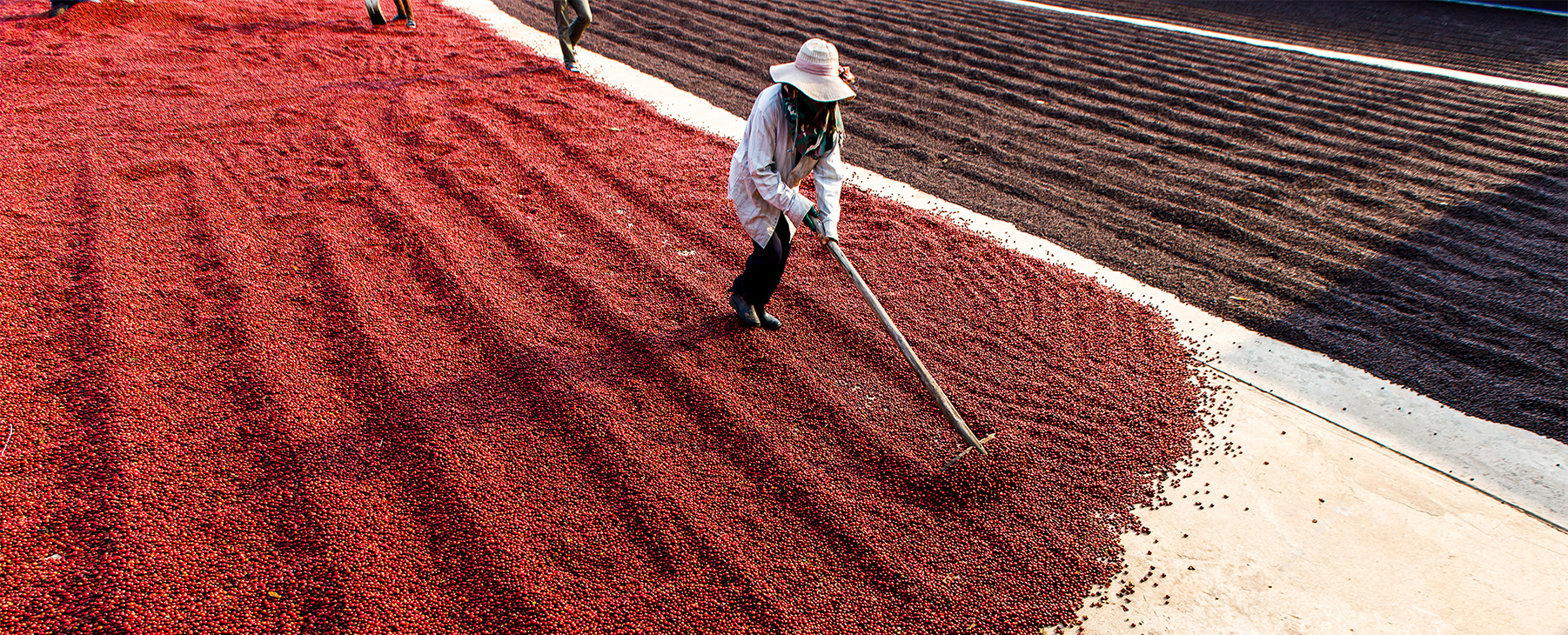Keep in mind that before becoming a soothing drink, coffee is a green bean from the fruit of a tree. This fruit is called the “cherry” and this small tree, the coffee tree plant.
These drying processes therefore correspond to the various methods used to transform coffee cherries into green beans.
At Brûlerie des Monts, we offer coffees that have been dried using various methods: washed, natural, red honey, dark honey, anaerobic, KVW process and Swiss water process. Why do we offer different processes? Because the process impacts the final result when the coffee is in the cup. Thus, the choice of process is yours to choose to suit your tastes!
Here is an overview of the various drying processes, each of which creates very distinct aromas.
Washed process
With this popular method, the coffee cherries are soaked in water to separate any defective cherries (floaters). Then, the cherries are mechanically pulped and the resulting beans are immersed in water tanks where they remain for 18 to 24 hours. During this period, the mucilage remaining on the beans breaks down. The beans are then washed and dried in giant dryers or on African drying beds under the sun.
Coffees that have been washed are, as a rule, particularly aromatic, fruity and tart.


Natural process
In using this method, which is the most historic, the cherries are kept whole. Natural coffee drying is suitable for countries with a well-defined dry season, such as Costa Rica, Brazil and Ethiopia.
The cherries are spread out in a single layer, either on a concrete floor or on raised African drying beds. They are turned regularly in order to obtain uniform fermentation. At night, the cherries must be covered for protection from humidity.
The drying time ranges from 10 to 30 days. The cherries are then crushed to extract the beans.
Naturally dried coffees are usually sweeter, with a fruity, aromatic and wilder character offering more body than washed coffees.
Honey process
Popular in Costa Rica, this is a hybrid process, combining the washed and natural methods.
This processing method results in four levels of “honey”: Black, Red, Yellow and White.
It is the percentage of mucilage (honey) left on the bean that will determine the colour of the parchment (envelope between the mucilage and the bean) when dried in the sun.
Once soaked in water, pulpers remove only the outer skin of the cherry. Thus, the mucilage remains on the beans. The beans are then dried in the sun on African beds, turning them often.
White and yellow honeys retain a very small amount of mucilage (honey) around the bean. As for the beans that will make red or black honey coffees, they are more lightly pulped to leave as much mucilage as possible.
After pulping, the coffee is dried for 7 to 12 days. Depending on the temperature and weather, the results will vary. Dry weather will help the coffee dry faster. In this case, the colour of the bean will remain rather pale. Cloudy weather will expose the coffee to more humidity and shade. The drying will then be slower and a darker color will be obtained. To obtain the black “honeys”, the drying beds are covered.
This method gives a rather sweet and balanced coffee, which is less acidic, closer to natural coffees.
See the Honey process coffees


Anaerobic process – fermentation
This is a process that producers are using more and more to differentiate themselves and to obtain complex, original and high-end flavours.
Anaerobic fermentation deprives the coffee of oxygen by placing it in a fully sealed fermentation tank.
In about twenty hours, the anaerobic process causes a breakdown of the mucilage in addition to accumulating an enormous amount of CO2 pressure in the tank. The flavours of the mucilage are then strongly “pressed” into the parchment of the coffee bean.
At this stage, other components such as spices, tropical fruits, molasses, etc. can be incorporated to introduce new flavours.
The coffee is then removed from the tank and dried to end the fermentation process.
See the coffeesWhat about our favourite caffeine-free hot beverages?
Decaffeinated coffee is a sensible option, especially in the evening for light sleepers. There are two recognized methods for decaffeinating coffee: the KVW process (with a solvent) and the water method.
KVW decaffeinated process
With this process, the bean is first steamed in order to open its pores. Then, it is soaked for 10 to 12 hours in an organic solvent, dichloromethane. The coffee bean finally returns to the steam bath for a few hours to get rid of the solvent residues.
Swiss Water Process Method
During this water decaffeination process, no other product is used. As a result, the aroma is better preserved. However, this method is more time consuming than the previous one. The beans are soaked in hot water, and then removed while the caffeine present in the water is extracted. To do this, charcoal filters are used. The beans are placed back in the water, now reabsorbing their flavour – caffeine free!


Finally, regardless of the drying process used, for good bean preservation, the initial moisture content of the bean, which is around 70%, must be reduced to 10-12% by the end of drying.
You are now better acquainted with the various drying processes we use at Brûlerie des Monts! Maybe now you might feel free to ask what process was used for the beans of your next coffee. It’s yours to discover!
Online store



